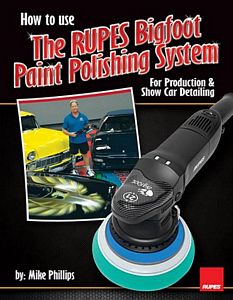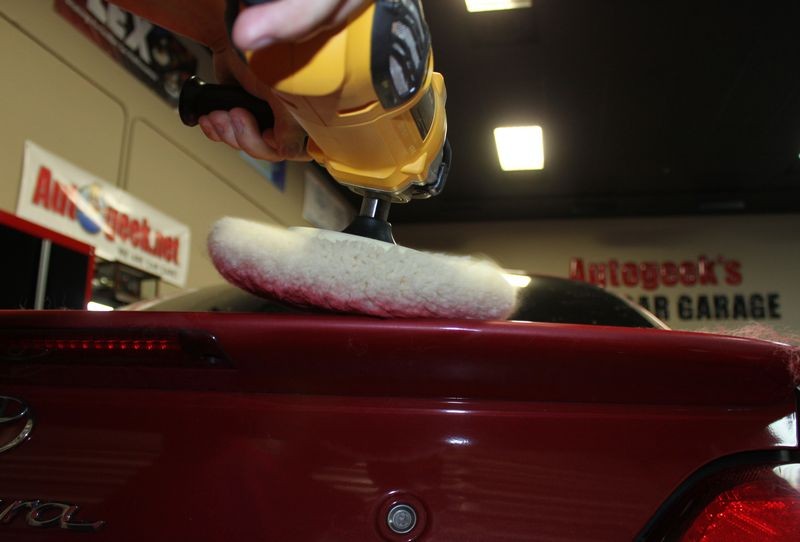fou4thought
New member
- Aug 20, 2017
- 15
- 0
Hi Mike and fellow detailers,
Lately I have noticed a pattern that is getting very popular in the detailing world, and I don't know if I am missing something here.
Alot of professional detailers having polishers that range from 1 inch to 6 inches and will constantly break down each panel they are using based on the best fit for the pad. So if there is a large flat surface, they may use the 5 or 6 inch polisher and backing plate/pd, but if there is a small piece of painted trim, they use either a 1 - 3 inch backing plate and pad, constantly making reference of the edges on paintwork and how the pad shouldn't touch it or overhang it as there is minimal clear and the risk is too high. It's important to note that ALL these detailers are using free spining dual actions and not rotories.
I personally am a forced rotation and oscillation (FRFO) tool guy. I love my 3401 and XCE. And it's my default go to in my workshop. I do have the other free spinning and smaller machines, but find using my 3401 doesn't fart around trying to look pretty and gets the job done. I also find it is just fine in tight areas by tilting the pad, adjusting speed and technique. So far I have never burnt an edge or gone through clear on an edge, even when the pad is overhanging an edge during a pass. But I'm beginning to doubt myself when I see the latest trend of other pros that I respect have to have a machine for every type of panel width and avoid edges like it's COVID19.
So Mike, as you are a straight shooter and in my opinion, the greatest "real world" detailer, where time is money - my questions are:
1. Is using a larger pad on smaller panel areas where the pad overhangs the edge when spinning a reckless technique?
2. Is tilting the pad on a FRFO to make it fit into tighter areas reckless?
3. Is doing a pass where the pad hands off an edge with a free spinning dual action, or a forced rotation and oscillation machine reckless?
5. Do you really need all these machines and pads to accommodate each panel width?
Thanks in advance. Really looking for some real world clarity here.
Sent from my CPH1979 using Autogeekonline mobile app
Lately I have noticed a pattern that is getting very popular in the detailing world, and I don't know if I am missing something here.
Alot of professional detailers having polishers that range from 1 inch to 6 inches and will constantly break down each panel they are using based on the best fit for the pad. So if there is a large flat surface, they may use the 5 or 6 inch polisher and backing plate/pd, but if there is a small piece of painted trim, they use either a 1 - 3 inch backing plate and pad, constantly making reference of the edges on paintwork and how the pad shouldn't touch it or overhang it as there is minimal clear and the risk is too high. It's important to note that ALL these detailers are using free spining dual actions and not rotories.
I personally am a forced rotation and oscillation (FRFO) tool guy. I love my 3401 and XCE. And it's my default go to in my workshop. I do have the other free spinning and smaller machines, but find using my 3401 doesn't fart around trying to look pretty and gets the job done. I also find it is just fine in tight areas by tilting the pad, adjusting speed and technique. So far I have never burnt an edge or gone through clear on an edge, even when the pad is overhanging an edge during a pass. But I'm beginning to doubt myself when I see the latest trend of other pros that I respect have to have a machine for every type of panel width and avoid edges like it's COVID19.
So Mike, as you are a straight shooter and in my opinion, the greatest "real world" detailer, where time is money - my questions are:
1. Is using a larger pad on smaller panel areas where the pad overhangs the edge when spinning a reckless technique?
2. Is tilting the pad on a FRFO to make it fit into tighter areas reckless?
3. Is doing a pass where the pad hands off an edge with a free spinning dual action, or a forced rotation and oscillation machine reckless?
5. Do you really need all these machines and pads to accommodate each panel width?
Thanks in advance. Really looking for some real world clarity here.
Sent from my CPH1979 using Autogeekonline mobile app





 .
.